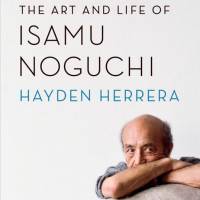A female dancer once described celebrity sculptor and designer Isamu Noguchi as having "a lost, faraway look that was irresistible." Rendering the man behind the look is the aim of Hayden Herrera's new biography, "Listening to Stone: The art and life of Isamu Noguchi."
Listening to Stone, by Hayden Herrera
592 pages
Farrar, Straus and Giroux, Nonfiction.
A tale of ceaseless departures, it shows the artist as a nomad torn between cultures, his vast range of styles reflecting a quest for belonging and his fight against, "the disaster of time."
Noguchi was born in 1904 in Los Angeles, the son of a Japanese father and an Irish-American mother. He lived between the United States and Japan, fusing Western modernism with a Japanese economy of form and reverence for materials. Noguchi designed it all — from portrait busts and stage sets to coffee tables, landscapes and kimonos. He saw nature as the basis of art, importing rocks from Japan for his gardens at the UNESCO building in Paris and the Chase Manhattan Bank headquarters in New York.
A loner without a fixed home, art was a way for him to connect with the earth and the future.
"All things worthwhile must end as gifts," he mused about his legacy shortly before he passed away in 1988.
Noguchi's life featured famous lovers and friends, yet despite Herrera's erudition, the man himself remains largely elusive. He is drawn as wary of commitment, both to women and styles — an artist who valued abstraction over expressionism.
"I feel the more one loses oneself," he said, "the more one is oneself." This book, then, is for art and design aficionados — readers looking for clues on his inner life will find themselves skimming pages.



















With your current subscription plan you can comment on stories. However, before writing your first comment, please create a display name in the Profile section of your subscriber account page.